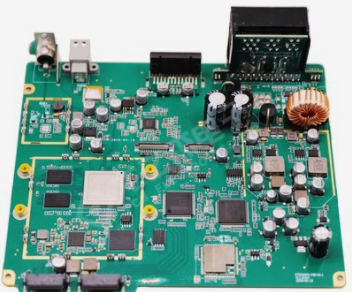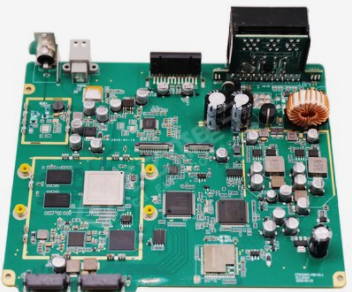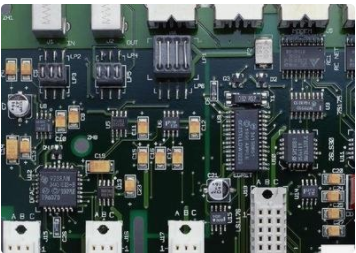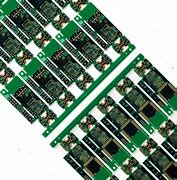
1、 Comparison of Advantages and Disadvantages of Two PCB Processes
The process characteristics of acid zinc nickel alloy electroplating and alkaline zinc nickel alloy electroplating on PCB are similar to those of acid zinc plating and alkaline zinc plating. The main advantages and disadvantages of these two PCB processes are compared as follows.
Advantages of alkaline zinc nickel alloy electroplating and disadvantages of acid zinc nickel alloy electroplating

1. Uniform plating ability (dispersion ability) is good, PCB coating 1. Uniform plating ability (dispersion ability) is relatively low, and thickness distribution is relatively uniform. The uniformity of coating thickness distribution is relatively poor.
2. In the coating of high and low current density area of workpiece 2. In the coating of high and low current density area of workpiece
The difference of nickel content is small. The content of nickel varies greatly.
Disadvantages of alkaline zinc nickel alloy electroplating Advantages of acid zinc nickel alloy electroplating
1. The current efficiency is low, generally about 50%. 1. The current efficiency is high, generally about 90%,
The deposition rate of the coating is slow, about 0.25 μ m/min. The deposition rate of the coating is fast, up to more than 1.0 μ m/min.
2. PCB production and operation costs are high. 2. The production operation cost is low, about 50% lower than that of alkaline process.
3. It is relatively difficult to keep the bath running normally. 3. It is relatively easy to keep the bath running normally.
4. Cast iron, carburized steel and high carbon steel shall not be plated. 4. It can be plated with cast iron, carburized steel and high carbon steel.
2、 Selection of Two PCB Processes
From the comparison of the characteristics, advantages and disadvantages of the above two PCB alkali processes, we can draw a conclusion that the selection of these two processes depends on the material of the coated workpiece and the geometric shape of the workpiece. Except for such materials as cast iron and carburized steel, the process selected for workpieces made of other metal materials (mainly carbon steel) will depend on the geometric shape of the workpieces. The principle of selection is: when PCB electroplating, the high current density of the workpieces and the current density in the low current density area of the workpieces differ greatly, the alkaline process is used; otherwise, the acid process is used. For example, for workpieces with blind holes or workpieces whose center is far away from its edge (such as impellers), the current density in the high current density area of the workpieces is greatly different from that in the low current density area of the workpieces during electroplating. In this case, if the acid process is adopted, the difference in coating thickness and nickel content between the low current density area and the high current density area of the workpiece is much greater than that of the alkaline process. When the workpiece to be plated is of simple shape, such as various cylinders, pistons, fasteners, etc. of the cylinder, due to the relatively consistent current density on the surface of the workpiece, the acid process should be selected in this case, because the two advantages of the alkaline process have little significance, while its own shortcomings are quite prominent.
3、 A view on the current situation of zinc nickel alloy electroplating in china
The research on zinc nickel alloy in China began in the 1980s, and all of them studied PCB acid chloride electroplating process. In this study, the author successfully solved the technical key of acid chloride electrodeposition of nickel alloy - finding and determining the best combination of additives to effectively inhibit nickel deposition in the low cathodic current density area. As a result of this breakthrough, this PCB process can be used for hanging plating of iron and steel parts with complex shapes, as well as barrel plating. Since 1993, many units have used this process to put it into industrial batch production. One of the main processing products is cable tray, which has a processing capacity of 1-2 million tons in the past decade. However, as far as the author knows, although acid zinc nickel alloy electroplating began to be used in PCB industrial production in the 1990s, it is still in the initial stage in terms of product variety and quantity, and alkaline zinc nickel alloy electroplating has not been reported to be used in industrial production in the 1990s.
The rapid development and popularization of zinc nickel alloy electroplating in China is still in recent years, but only alkaline zinc nickel alloy electroplating has been developed, while acid zinc nickel alloy electroplating has not been developed accordingly. As mentioned above, the process characteristics of acid zinc nickel alloy electroplating and alkaline zinc nickel alloy electroplating are similar to those of acid zinc plating and alkaline zinc plating. The selection of process depends on the shape of the workpiece (except for some steel types). Some are suitable for alkaline process and some are suitable for acidic process. Therefore, the use ratio of the two processes of zinc nickel alloy electroplating should be approximately similar to that of acid zinc plating and alkaline zinc plating, without significant differences.
It is known that acid zinc plating accounts for more than 50% of the total amount of galvanization in China, and alkaline zinc plating accounts for about 40%. Although there is no national statistical data on acid zinc nickel alloy plating, the author estimates that it will not exceed 10%. The reason why the proportion of acid zinc nickel alloy electroplating is so low is that a large number of workpieces that should have used acid zinc nickel alloy electroplating currently generally use alkaline zinc nickel alloy electroplating process. Taking the single hydraulic prop of coal mine as an example, the number of hydraulic props used nationwide exceeded 1 million, and countless companies specializing in PCB electroplating generally used alkaline zinc nickel alloy electroplating process instead of acid zinc nickel alloy electroplating process. According to the author's research, development and production practice of these two processes, the production cost of such workpieces can be reduced by about 50% and the output can be increased by more than 2 times by using the PCB acid zinc nickel alloy electroplating process under the conditions of the same nickel content, the same coating thickness and similar corrosion resistance. The author does not intend to discuss the reasons for the unreasonable development of the two zinc nickel alloy electroplating processes in China in recent years, but only predicts that this situation will be changed in a few years, and the acid zinc nickel alloy electroplating process will gradually rise to its proportion.









